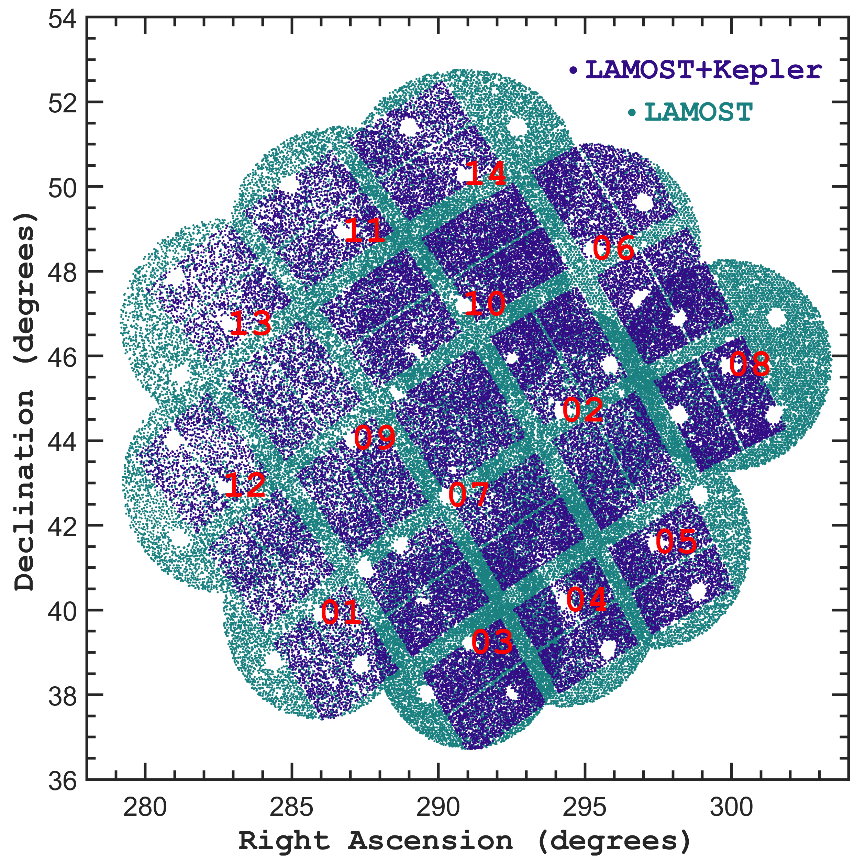You are here
LAMOST-Kepler project released its spectra in the 2012-2017 survey
An international team led by Prof. Jian-Ning Fu, from Beijing Normal University, and Dr. Weikai Zong, the LAMOST youth researcher, made the spectra released during the period of 2012 to 2017, which is undertaken by the LAMOST-Kepler project. This catalog will provide a huge database for the researches of many areas with the help of Kepler photometry, including asteroseismology, stellar activity and exoplanets.
The article is published online in the world-renowned astrophysical journal of The Astrophysical Journal Supplement Series on October 16th (Beijing time, Zong & Fu, et al. ApJS, 238, 30).
The LAMOST-Kepler project was initialed at the beginning of LAMOST pilot survey phase with an aim at measuring as many as possible for targets with Kepler photometry available. Now it counts 227,870 spectra of 156,390 stars, among which the project obtained atmospheric parameters and heliocentric radial velocity for 173,971 spectra of 126,172 stars. The common stars, i.e., both observed by LAMOST and Kepler, reaches a number of 76,283, corresponding to about 40 percent of Kepler photometric targets.
With the previous survey spectra data (De Cat & Fu, et al. 2015, ApJS, 220, 19), researchers had composed many scientific papers with very high impact sciences, such as the study of the eccentricities of Kepler hosting-planets stars (Xie, et al. 2016, PNAS, 113, 11431), the metallicity of stars hosting Neptunian cousins of hot Jupiters (Dong et al. 2018, 115, 266), and the chromospheric activity of solar-like stars (karoff et al. 2016, NatCo. 7, 11058).
Dr. Jianrong Shi, Dr. Ali Luo, Dr. Haotong Zhang, Dr. Yue Wu and Dr. Wei Zhang from National Astronomical Observatories of China also participate this work. This work was supported by NSFC, the National Basic Research Program of China, the Polish National Science Centre grant and the Belgian Federal Science Policy Office.

Fig.1 Sky coverage of all targets observed by the LK project. The stars observed by LAMOST and with the Kepler photometry are marked in Persian blue, others are in dark cyan. The numbers are marked the position of the 14 LK fields.
